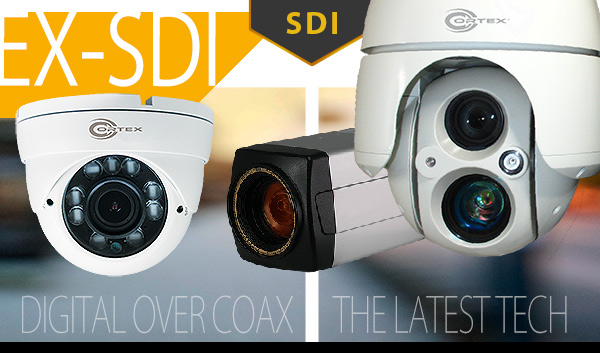Parking lots are a very popular place for criminal activity especially after hours. It is imperative that businesses remain aware of any events that result in needing visual verification of crimes. Choosing the right video security system is essential to keep your property safe.
How do you choose a surveillance system that suits your needs?
IP camera systems have become increasingly popular with the increased use of network video streaming technologies. In addition to its image capturing functions,  IP cameras have built-in video compression processors with web server function. This will compress raw video footage that will then broadcast over the internet, which will then give the user access to data from anywhere with internet connection. Although IP has had significant improvements in standard quality imaging, there are still some deficiencies.
IP cameras have built-in video compression processors with web server function. This will compress raw video footage that will then broadcast over the internet, which will then give the user access to data from anywhere with internet connection. Although IP has had significant improvements in standard quality imaging, there are still some deficiencies.
IP cameras use POE (Power over Ethernet) technology which can cause the power voltage to drop when the camera are connected in mass to a POE switch or NVR. This can result in image distortion and compression based noise through the video feed. To help with this problem, users should install high quality ethernet cable, or shorten the distance in connection. Another issue that occurs with IP cameras is video latency. This happens because the network camera needs to compress the video before it transmits over the internet. To help minimize video latency, users can increase the bandwidth by upgrading their network hardware or reduce the consumption of each camera. Also, lowering the bit-rate or streaming and image resolution can help to reduce the video delay time.
Another form of video surveillance is using SDI (Serial Digital Interface) camera system. SDI is commonly used in professional applications that run coaxial video cables with recommended BNC compression connectors to carry digital video data streaming. Improvements have been made to SDI to offer high-bit rate HD-SDI cables that will transmit HD digital video signals. SDI is designed as a high upgrade resolution that is commonly used in movies and television. HD-SDI has now entered into 3G-SDI standard to allow dual-link, which goes up to three gigabits per
second of data transfer. This will more that exceed a full high-definition video signal at 1,080 line of resolution with up to 60 full frames per second.
Using SDI is beneficial when considering long cable runs. EX-SDI allows for cable extensions of up to 984 feet with even high-bit rate HD-SDI cables runs going 328 feet. SDI also transmits an uncompressed digital video signal without any encryption and security that is built into the HDMI standard. Lastly, SDI uses general 75-ohm coaxial cables and secure fitting BNC connectors which remain tight to help reduce the risk of cables falling out and risk of noise interfering with the digital signal.
It is always good to consider your options before purchasing a security surveillance system. Installing a high performance HD-SDI system with high quality resolution cameras will record and capture exactly what your seeing in a live reproduction. Contact CCTV Core today. We are here to assist you with
all your security needs!
Thank you for taking the time to view our website. As a homeowner, give yourself piece of mind by protecting your home and family. We here at CCTV Core have our "EYE" on surveillance and are here to help you with your security system needs.
Regards,
CCTV CORE TEAM
More Technical | Security | Training Articles-Pages
If you enjoyed this article you may enjoy these.